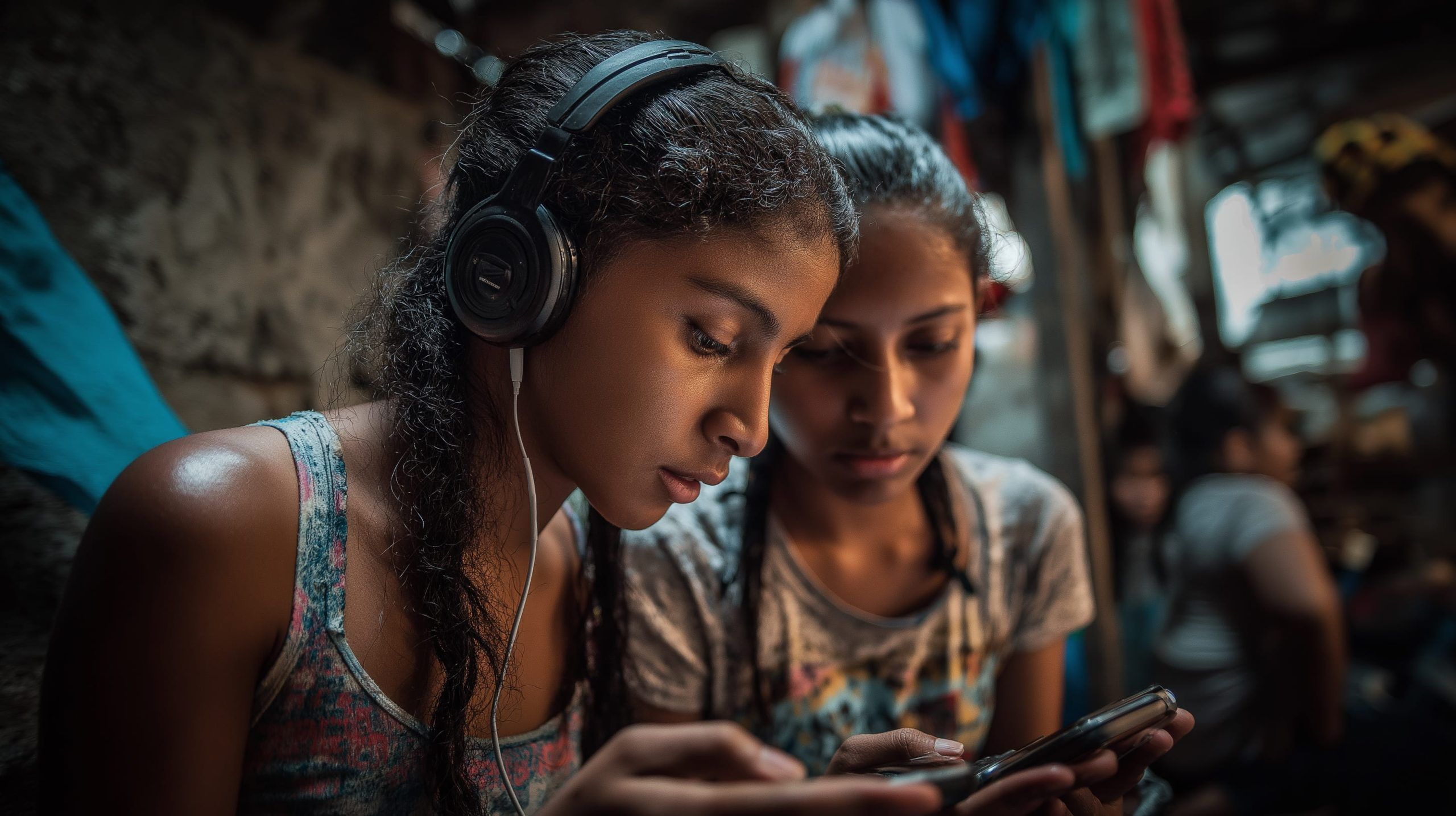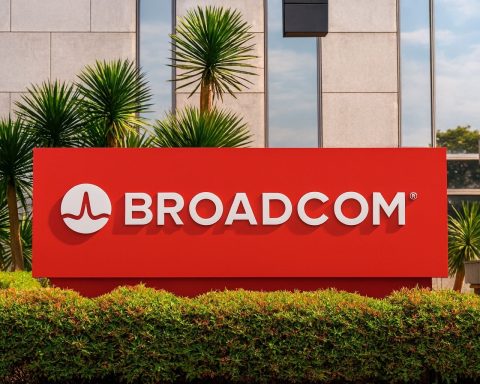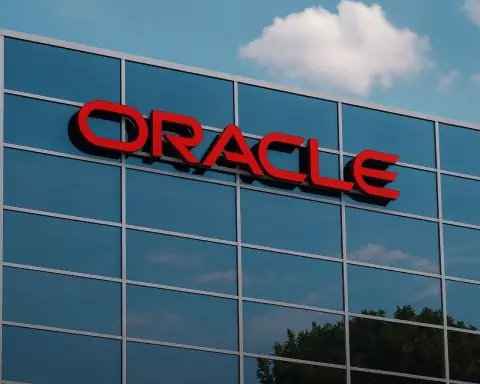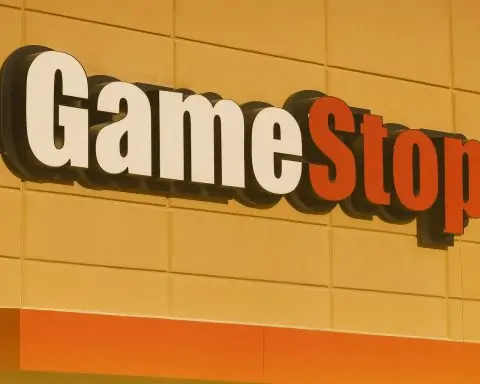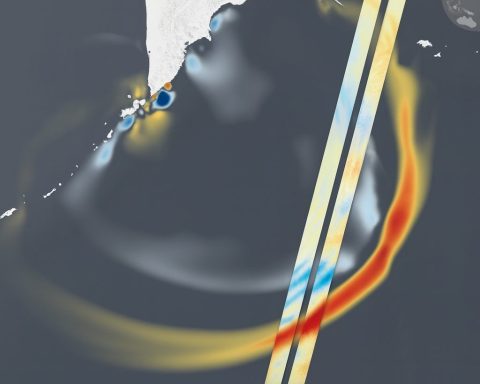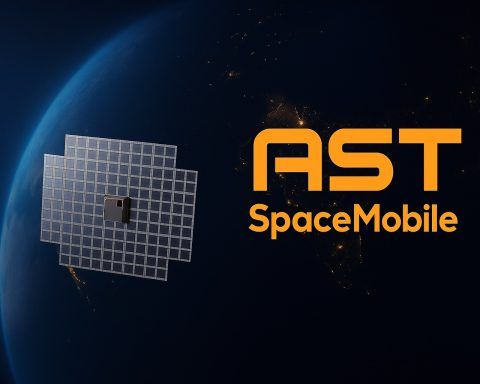- As of early 2024, about 7.03 million Hondurans were internet users, representing 65.9% of the population.
- Internet penetration rose from roughly 25–30% in the mid-2010s to about 61% in 2023 and 66% in 2024.
- There is a sharp urban-rural divide, with about 55% of urban residents online in 2019 versus around 20% of rural residents.
- In 2024, Honduras had 8.41 million active mobile cellular connections, roughly 79% of the population, with many people using multiple SIM cards.
- By 2023, about 85% of the population had access to at least a basic 4G signal from Tigo and Claro, though speeds differ (Claro ~31.5 Mbps, Tigo ~11.1 Mbps).
- Starlink arrived in 2023, offering 50–150 Mbps down and 20–50 ms latency, with typical monthly costs around L1200 and upfront equipment about L5400.
- Geostationary satellites HughesNet and Viasat provide 5–25 Mbps down with 600–700 ms latency and plans commonly in the 20–30 GB/month range, at $60–$100 per month.
- The IDB-funded Giga initiative aims to connect 2,000 public schools by 2023 and up to 10,000 by 2026, using a community-contribution model to pay for internet.
- As of mid-2025, there is no commercial 5G in Honduras; spectrum in the 3.5 GHz band has been freed for future use, with Tigo and Claro signaling interest for rollout in 2025–2026.
- Hispasat donated connectivity to 15 rural schools after Hurricanes Eta and Iota in 2020, illustrating satellite-based relief in disasters.
Overview of Internet Access in Honduras
Honduras has made steady gains in internet connectivity over the past decade, transforming digital access into a crucial lifeline for its population. As of early 2024, an estimated 7.03 million Hondurans were internet users, representing about 65.9% of the population [1]. This marks a significant rise from just a few years prior – in 2017, only about 25–32% of the population had internet access [2], and by 2022 penetration was 55.9% [3]. The COVID-19 pandemic, economic initiatives, and expanding mobile networks have all accelerated internet adoption in recent years. Still, roughly one-third of Hondurans (around 3.6 million people) remain offline [4], highlighting the work left to bridge the digital divide.
Urban vs. Rural Disparities: Internet access in Honduras is marked by a sharp urban-rural gap. In cities and towns, a majority of residents use the internet, whereas in the countryside connectivity is far more limited. For example, as of 2019 about 55% of urban Hondurans were internet users compared to only 20% of the rural population [5]. Other studies underscore this divide – one survey around 2020 found that as few as 1.9% of rural residents had any internet access, reflecting extreme isolation in some communities [6]. Contributing factors include the difficult geography (mountains and jungles), sparse infrastructure in remote areas, and higher poverty rates outside cities. Many rural households lack not only broadband service but even reliable electricity (about 8,000 schools have no grid power [7]), compounding the challenge of getting online. By contrast, urban centers like Tegucigalpa and San Pedro Sula benefit from multiple internet service providers, fiber-optic backbones, and mobile broadband coverage, resulting in far greater connectivity. Bridging this urban-rural digital divide has become a national priority, as discussed later in this report.
Internet Penetration and Usage Trends
Honduras’ internet penetration has climbed rapidly in recent years, though it still lags behind global and regional leaders. From around 25%–30% penetration in the mid-2010s, usage surged to ~61% by 2023 [8] and about 66% in 2024 [9]. This growth corresponds to hundreds of thousands of new users coming online annually (internet users increased by ~770,000 from 2022 to 2023 alone [10]). The expansion of affordable smartphones and 3G/4G mobile data plans has been a major driver of new uptake, as many Hondurans access the internet primarily through mobile devices. In 2024 there were 8.41 million mobile cellular connections active (approximately 79% of the population, including many people with multiple SIM cards) [11].
Despite this progress, Honduras remains below the Americas’ regional average for internet use. For context, the Americas region averages about 85% of the population online [12]. Within Central America, Honduras is in the middle tier – it trails countries like Costa Rica (around 85% internet penetration) and Panama (~74%), but is roughly on par with El Salvador (~63%) and slightly ahead of Guatemala (~54%) in recent ITU estimates [13] [14]. In other words, a majority of Hondurans are now online, but the country has not yet achieved the near-ubiquitous connectivity seen in wealthier neighbors. This gap is partly due to lower incomes and higher infrastructure hurdles, which affect both affordability and availability of service.
Usage Patterns: Among those with internet access, social media and mobile messaging are very popular (over 4.5 million Hondurans – ~43% of the population – were active social media users in 2024) [15]. Internet use is also skewed toward younger demographics given Honduras’ youthful population. However, digital literacy and the extent of usage can vary widely by region and socioeconomic status. The pandemic period saw a surge in demand for connectivity for remote schooling, work, and communication, putting a spotlight on the inequalities in who could get online. It also spurred government and community efforts to extend connectivity (for example, through free public Wi-Fi hotspots and school internet programs). Overall, the trend in Honduras is one of increasing internet uptake year over year, with growth likely to continue as infrastructure improves and more services move online.
Internet Infrastructure: Mobile, Fiber, DSL and Public Wi-Fi
Honduras’ internet infrastructure is a mix of modern mobile networks, expanding fiber-optic links in urban areas, legacy telephone lines, and community-based access points. The country’s mountainous terrain and widely dispersed rural settlements have historically made it challenging to build out fixed networks, so mobile broadband has become the primary mode of access for most Hondurans.
- Mobile Networks: Two large operators, Tigo and Claro, provide nationwide mobile coverage spanning 2G GSM, 3G UMTS, and 4G LTE technologies. As of 2023, an estimated 85% of the population had access to at least a basic 4G signal from one of the operators [16]. 4G/LTE service launched in 2014–2015 in the largest cities and has since expanded to secondary towns, though many remote villages still rely on 2G/3G or have spotty reception. Tigo and Claro have both been investing in network upgrades; Tigo in particular has a license obligation to cover all major cities with LTE [17]. By late 2023, Opensignal measured average download speeds of ~31.5 Mbps on Claro’s network and ~11.1 Mbps on Tigo’s network (reflecting Claro’s larger spectrum holdings and lighter load), while 4G availability (time connected to 4G) was about 83% on Tigo vs 79% on Claro [18] [19]. These mobile networks carry the bulk of Honduras’ internet traffic, as many consumers use prepaid data packages on smartphones rather than a fixed home broadband line.
- Fixed Broadband (Fiber, Cable, DSL): Fixed internet in Honduras has historically been underdeveloped but is now gradually improving in urban centers. The state-run telephone company Hondutel once provided DSL over copper telephone lines, but fixed-line teledensity is only ~4.9% [20], and DSL reach in rural areas is negligible. In the last decade, private ISPs have focused on cable modem and fiber-optic broadband in cities. Cable TV companies such as Cable Color and Multicable offer HFC (hybrid fiber-coaxial) broadband in several cities, and both Tigo and Claro have rolled out fiber-to-the-home (FTTH or GPON) in neighborhoods of Tegucigalpa, San Pedro Sula, and other population centers. Customers in these areas can now get plans with speeds from 10 Mbps up to 100–300 Mbps or higher, which was unheard of a few years ago. For example, Tigo’s residential fiber plans offer tiers like 100 Mbps, 200 Mbps, or 300 Mbps, often bundled with digital TV and phone service. Higher-speed services remain largely restricted to major urban centers, however [21]. Outside the cities, fixed broadband options are limited – some towns are served by local wireless ISPs or cooperatives using point-to-point wireless links, and Hondutel has been attempting to deploy fiber in select areas (advertising a 40 Mbps FTTH plan for L.999/month on its website) [22].
- International Connectivity: Honduras is connected to the global internet via several submarine fiber optic cables landing on its Caribbean coast. The main links include the Maya-1 and ARCOS fiber cables running from the U.S. through Central America (landings in Puerto Cortés/Omoa), which have been in operation since about 2000–2001 [23]. A newer subsea cable, BITEL, was laid in 2020 from the mainland to the Bay Islands, improving connectivity to Roatán and Utila [24]. Despite these connections, bandwidth costs have historically been high. (Notably, in 2013 the regulator CONATEL stepped in to impose price caps on wholesale internet bandwidth to force down consumer prices [25].) The government has also discussed investing in additional submarine cable capacity to boost international bandwidth and redundancy [26].
- Public Wi-Fi and Community Access: To extend internet access, various public and private initiatives have established free Wi-Fi hotspots and community networks. The government has at times provided free internet to thousands of low-income households – for example, a recent program subsidized service for ~75,000 households as part of pandemic relief [27]. In urban centers, you can find free Wi-Fi zones in some public parks, plazas, and universities (often sponsored by the municipality or telecom companies). Additionally, NGOs and local leaders have created community networks in rural areas. One notable case is the Azacualpa community network in Intibucá, run by a local indigenous community with support from the Internet Society and a Honduran NGO (RDS-HN) [28] [29]. In that community, residents set up their own Wi-Fi towers and share a satellite backhaul link to get internet where no commercial provider operated – a model of self-provision that could be replicated in other remote villages. Another example is in the Bay Islands: a community in Roatán’s remote Luz y Vida area recently partnered with Próspera and deployed Starlink satellite receivers feeding shared Wi-Fi access points, allowing nine zones of the village to get online for the first time [30] [31]. These grassroots efforts, alongside government “Internet del Pueblo” style programs, are vital for digital inclusion in underserved regions.
The table below summarizes the main types of internet access in Honduras, their typical providers, and the range of speeds and costs consumers might encounter:
| Access Type | Key Providers | Typical Speeds | Typical Monthly Cost |
|---|---|---|---|
| Mobile Internet (3G/4G) | Tigo; Claro (nationwide) Honducel (Hondutel’s mobile, very limited) | ~5–20 Mbps average on 4G (higher in best areas) [32]; 1–3 Mbps on 3G; latency 30–50 ms on LTE | Prepaid data packs from L.50–L.200 for 1–5 GB; Unlimited monthly plans around L.600–L.800 (~$25–$33) (varies by promotions) |
| Fixed Broadband – Fiber/Cable | Tigo (GPON fiber, coax cable) Claro (FTTH, cable) Cable Color, Multicable (cable & fiber in cities) Hondutel (FTTH in select areas) | Speeds: 10, 20, 50 Mbps plans common; premium plans 100–300 Mbps in major cities. Uploads often lower except on fiber (some symmetric plans). | Urban pricing: e.g. L.800 ($32) for 50 Mbps; ~L.1000–L.1200 ($40–$50) for 100–200 Mbps [33]. Bundles with TV/phone can be L.1200–L.5000 depending on speed/tier. (Older coax/DSL plans may cost similar prices for much lower speeds.) |
| Fixed Broadband – DSL | Hondutel (legacy ADSL) Smaller ISPs in limited areas | Speeds: 1–5 Mbps typical on ADSL2+; up to ~10 Mbps max on best lines. | Around L.600–L.800 ($25–$33) for basic DSL, where available. (DSL is largely being supplanted by fiber or wireless options in cities.) |
| Public/Community Wi-Fi | Government (e.g. in schools, parks); NGOs; local cooperatives | Varies: often 2–20 Mbps shared connections to hotspot locations. Latency depends on backhaul (could be satellite or terrestrial). | Free at point of use. (Costs are covered by sponsors or community contributions. For instance, businesses in some villages cover a school’s internet bill in exchange for shared use [34] [35].) |
| Satellite Internet | Starlink (low-earth orbit – new 2023) HughesNet, Viasat (geostationary – available in rural areas) | Starlink: ~50–150 Mbps down, ~10–30 Mbps up, ~20–50 ms latency (low latency) [36]. Traditional satellite (GEO): ~5–25 Mbps down, ~3 Mbps up, >600 ms latency. | Starlink: $50/month (≈ L.1200), plus one-time equipment ($300–$600) [37]. Other satellite: ~$60–$150/month for limited data (often capped at 10–50 GB). Higher cost per Mbps and per GB than terrestrial options. |
(Note: L. = Honduran Lempiras. At the time of writing, 1 USD ≈ 24.5 Lempiras.)
As the table indicates, pricing and speeds vary widely. In urban zones where multiple ISPs compete, consumers now enjoy far better value – for example, in 2023 Cable Color offered 100 Mbps fiber service for about $35 per month, and even a 200 Mbps plan for ~$40 [38]. Just a few years ago, such speeds cost two to three times more (some users paid $80+ for 100 Mbps until they negotiated newer rates) [39]. Meanwhile, in smaller towns or islands with only one local provider, prices remain high. On Roatán, one ISP owner noted that an average islander “needs 15 Mbps but can only afford 5 Mbps,” citing a price of $75 per month for a 5 Mbps connection, in contrast to low incomes (average salary ~$423) [40]. This illustrates that affordability is still a major barrier. The Alliance for Affordable Internet recommends basic broadband cost less than 2% of monthly income, but in Honduras a “low consumption” mobile broadband plan costs around 10.5% of GNI per capita on average [41] – well above the affordability target. Lowering costs and increasing service value will be key to connecting the remaining offline population.
Major Internet Service Providers (ISPs)
Despite being a lower-middle income country, Honduras has a fairly competitive telecom market with a mix of international and local players. The Internet Society rates Honduras’ market competitiveness as “Good,” with users having a choice among several ISPs [42]. However, competition is uneven across segments – the mobile sector is effectively a duopoly, while the fixed broadband sector has a handful of national and regional ISPs.
Mobile Operators: The two dominant mobile network operators are Tigo Honduras and Claro Honduras. Tigo (owned by Millicom International) is the market leader, with around 60% mobile subscriber share as of 2021 [43]. Claro (owned by América Móvil) has roughly 40% of the mobile market. A tiny fraction (<1%) is served by Honducel, the mobile arm of Hondutel [44], which operates a limited GSM network and has struggled to compete. Both Tigo and Claro offer nationwide 2G/3G voice and data, and extensive 4G coverage in populated areas. They tend to mirror each other’s offerings, providing prepaid and postpaid plans, smartphones sales, and value-added services. In terms of performance, Claro has led in download and upload speeds, according to independent tests [45], while Tigo has boasted slightly wider coverage and higher 4G availability [46]. The two companies frequently run promotions and have been upgrading their infrastructure (e.g. Tigo turned off its 2G network in 2022 to repurpose spectrum for 4G/5G, and Claro was expected to refarm 2G spectrum by 2023 [47]).
Fixed Broadband ISPs: Several operators serve the fixed internet market:
- Tigo – In addition to mobile, Tigo Honduras inherited a cable TV footprint and has deployed fiber in cities. It offers “Tigo Hogar” home internet (cable modem or fiber) plus TV bundles. Tigo’s fixed broadband share is significant (in some data it accounts for ~29% of internet subscriptions) [48].
- Claro – Claro provides DSL in some areas (through its legacy telco arm which was once Megatel) and more recently FTTH and cable broadband in major cities. Claro’s market share in fixed internet is around 16% [49]. It leverages the América Móvil international backbone for capacity.
- Cable Color – A prominent Honduran-owned ISP that began as a cable television company. Cable Color operates in multiple cities, now largely via GPON fiber. It held about 11% of the internet market by subscriptions [50]. Users often praise Cable Color’s fiber service for offering symmetrical speeds (equal download/upload) and competitive prices [51].
- Multicable – Another local cable TV and internet provider, based in cities like La Ceiba and others. It had roughly 9% market share [52]. Multicable offers cable modem plans and has been transitioning to fiber in some locales. Some users report good reliability but “high prices” at Multicable [53] [54].
- Hondutel – The state-owned Honduran Telecommunications Company, which historically ran fixed telephony. Hondutel was late to broadband: it offers DSL in limited areas and recently launched a fiber-optic service (with plans like 40 Mbps for ~L.999) [55]. Hondutel’s share of the retail internet market is relatively small and not separately reported in top-five lists, but it remains an important backbone provider and ISP in niches like government connectivity. The company has faced financial troubles and is undergoing restructuring – the government in 2021 planned a rescue package to modernize Hondutel into a “gigabit-capable” provider and invest in new infrastructure [56] [57].
- Regional ISPs: In addition to the above, there are smaller ISPs operating regionally. For example, Max Communications (Maxcom) is the largest ISP on Roatán island, having acquired other local ISPs [58] [59]. In the Bay Islands there are also competitors like Fibernet, Reytel, Netman, and Mopleco Vision, each serving slices of the market [60]. These companies often started as local cable or wireless providers and sometimes partner with larger ISPs for bandwidth. In other regions, tech cooperatives and startups (like Comunitel or MultiData in the past) have attempted to serve small towns. The ISP market in Honduras is thus a patchwork: two giants cover mobile and some fixed lines, while local operators fill in gaps, especially on the north coast and islands.
Notably, the Internet Society’s 2025 report shows that choice of providers in Honduras is rated “good”, and the top five ISPs by market share account for about 70% of subscriptions [61]. Those top five (Tigo, Claro, Cable Color, Multicable, and Ufinet) include one interesting player: Ufinet is a wholesale fiber network operator (originally from Spain, with a base in Panama) that provides backbone services to other ISPs and large enterprises, holding ~5% share [62]. Ufinet’s presence indicates the role of wholesale carriers in improving Honduras’ internet infrastructure – it operates fiber backbones that smaller ISPs can leverage to reach global networks.
Service Offerings: Most Honduran ISPs offer a range of plans to cater to different budgets. On the mobile side, Tigo and Claro both have daily, weekly, and monthly data packages – for example, a popular prepaid pack might be L.45 for 200 MB + free WhatsApp/Facebook for a day [63]. Postpaid plans come with data caps or unlimited data at various speeds (with fair use policies). On the fixed broadband side, bundles are common: Tigo and Claro sell triple-play (internet, TV, phone) bundles, while Cable Color often bundles IPTV with internet. Price competition has been increasing. In fact, Honduran consumers have learned to periodically renegotiate or update their plans – one Reddit user noted that after a contract ends, you can often upgrade to a faster plan at a lower price due to market price drops, citing Cable Color’s 100 Mbps plan dropping from $85 to $45 over time [64]. This dynamic market benefits those who stay informed, though many consumers are still paying legacy prices for slow service because they aren’t aware of new offers.
Internet Speeds and Quality
Typical Speeds: Honduras has historically had slow internet by global standards, but speeds are improving as networks modernize. According to Ookla Speedtest data, as of January 2023 the median mobile download speed was around 22.7 Mbps, and median fixed broadband download was 29.4 Mbps [65]. By the start of 2024, median speeds had risen further – ~25.8 Mbps mobile and 38.2 Mbps fixed [66]. These medians conceal a wide range: users in Tegucigalpa with fiber might regularly see 100+ Mbps, while a 3G phone in a village might only get 1–2 Mbps. The average broadband download (which can be higher than median due to some very fast connections) was measured at 39.5 Mbps for fixed and 26.6 Mbps for mobile in 2023 [67]. Upload speeds tend to be lower; OpenSignal reports average uploads of ~10.3 Mbps on Claro and ~6.5 Mbps on Tigo for mobile [68], and many home broadband plans (especially older cable/DSL) have asymmetrical upload caps (e.g. 5 Mbps up on a 50 Mbps down plan).
Overall, the quality of experience is improving but remains uneven. Streaming video in HD is feasible in urban broadband and LTE connections (Opensignal rates Claro’s video streaming experience higher than Tigo’s, but both are in a moderate category). Online gaming and real-time applications still suffer in areas with high latency or congestion. Rural users often complain of network slowdowns and downtime. One positive indicator is that Honduras saw a +26% increase in mobile speeds and +36% in fixed speeds from 2022 to 2023 [69], suggesting network upgrades are yielding results.
Reliability: Power outages, hurricanes, and limited redundancy in backhaul links can impact reliability. The country is prone to hurricanes and tropical storms – for example, the 2020 hurricanes damaged infrastructure and left some regions without telecom service for weeks. However, there have been resilience improvements: by 2025 Honduras had two active Internet Exchange Points (IXPs) and at least one data center in operation [70] [71], which help keep local traffic internal and reduce dependence on international links for domestic connectivity. The Internet Society’s Internet Resilience score for Honduras is 40% (categorized as “medium” resilience) [72]. Encouragingly, there have been no significant internet shutdowns reported in the past year, and routing security (RPKI adoption) is fairly high in Honduras [73]. In everyday terms, urban users typically experience stable connections, whereas rural users might face periodic loss of signal or slowdowns at peak times.
Affordability and Speed Tiers: As noted earlier, cost is a big part of the quality equation – a fast network means little if users can only afford minimal data. Honduras still has work to do to make high-speed internet affordable to the masses. Government statistics indicated that in 2021, only about 14% of households nationwide had a fixed internet subscription (and many of those were low-speed plans) [74]. Most people rely on mobile data with careful rationing of usage. Prices have been coming down, though. For example, 1 GB of mobile data can be purchased for a bit over $1, and some social bundles provide unlimited WhatsApp or Facebook for a day at L.10–L.20 ($0.50–$0.80). Home broadband prices, as shown in the table, range from ~$20/month for basic plans up to $50+ for high speeds, which is still out of reach for low-income families (minimum wage in Honduras is on the order of $300/month depending on sector). Efforts by CONATEL and regional agreements (like the removal of roaming fees in Central America for some carriers) may improve value for consumers. The trend is toward higher speeds for the same price over time, thanks to network investments and competition.
Satellite Internet’s Role and Reach
Given Honduras’ challenging topography and many isolated communities, satellite internet has emerged as a crucial option to extend connectivity where terrestrial networks do not reach. There are two main categories of satellite service now in use: traditional geostationary satellites and newer low-earth orbit (LEO) constellations.
Geostationary Satellites: Providers like HughesNet and Viasat have been available in Honduras for years, primarily targeting rural homes, businesses, and government offices beyond the broadband footprint. HughesNet, for example, offers service across Latin America via high-throughput satellites – a small VSAT dish can deliver around 10–25 Mbps download speeds. Many remote schools and health clinics have used HughesNet links in the past to get basic connectivity. The downside is high latency (600-700 ms) and relatively low data caps – a typical plan might allot 20 or 30 GB per month, which can be consumed quickly with modern applications. Pricing tends to be high: a HughesNet plan of 25 Mbps might cost $60–$100 USD per month (plus equipment rental), making it a last resort for most families. Nonetheless, these satellite links have been lifesaving in areas with no other coverage, and they provide backup connectivity during disasters. For example, after Hurricanes Eta and Iota in 2020, relief agencies used satellite terminals to restore communications in flooded regions [75]. A Spanish satellite operator, HISPASAT, even donated connectivity to 15 rural schools post-hurricane, setting up satellite classrooms where students could download educational content via a local Wi-Fi network [76]. Such initiatives demonstrate the social value of satellite internet for digital inclusion.
Starlink’s Arrival: In 2023, SpaceX’s Starlink service went live in Honduras [77], introducing the first LEO satellite option for the country. Starlink is a game-changer in that it offers broadband speeds (50–150 Mbps) with much lower latency (20–50 ms) via a constellation of low-orbit satellites. Honduran users can order a Starlink kit (a pizza-sized dish and Wi-Fi router) and receive service almost anywhere in the country, so long as they have a clear view of the sky. Early adopters in Honduras report paying around L.1200 per month (roughly $48–$50) for Starlink, after an upfront equipment cost of about L.5400 ($220 on a recent promotion) [78]. Performance has been impressive – one user’s speedtest showed ~100 Mbps download and ~19 Mbps upload in rural Francisco Morazán. For remote communities, these speeds are revolutionary, enabling video calls, streaming, and cloud applications that were previously impossible over 3G or old satellite links.
Starlink’s rollout is still in its early stages in Central America, but by November 2024 Starlink was live in 28 Latin American countries including Honduras [79] [80]. Tech observers in Honduras are enthusiastic: one Roatán ISP commented that “Elon Musk’s Starlink, announced to be coming to Honduras in 2023, will be a game changer, especially in rural areas.” [81]. We are beginning to see Starlink used creatively – as mentioned, one community used it to feed a shared Wi-Fi network for villagers [82]. It’s also likely to be used for enterprise and government backup links (e.g. for ATMs or emergency services in remote zones). The key limitation for Starlink is cost – $50 a month is still expensive for rural Hondurans, and the equipment requires reliable power. But relative to previous satellite options, Starlink delivers far more bang for the buck. Over time, if costs can be subsidized or shared (via community Wi-Fi), LEO satellite broadband could significantly narrow the rural connectivity gap.
It’s worth noting that Honduras’ government has embraced satellite solutions as part of connectivity planning. Under the Giga initiative (UNICEF/ITU), the strategy for connecting schools includes a mix of fiber extension and, for hard-to-reach schools, satellite connectivity with solar power [83]. The recognition that not every village will get fiber or cell towers soon means satellites truly serve as a “digital lifeline” in those cases.
Digital Inclusion: Challenges and Initiatives
Honduras faces a number of digital inclusion challenges – from affordability and digital literacy to infrastructure and policy hurdles – but there are concerted initiatives by government, international organizations, and NGOs to address these issues. Below we outline the key challenges and ongoing efforts:
- Affordability and Poverty: High poverty rates (over 50% of households are below the poverty line) make the cost of devices and internet service prohibitive for many. This results in a usage gap even where coverage exists – some people live under a mobile signal but cannot afford a data plan. To tackle this, the government has implemented measures like zero-rating certain educational content (e.g., Legislative Decree 60-2020 ensured that internet used for school platforms did not count against data or would be free during the pandemic) [84]. Operators such as Tigo and Claro have also offered bonus data or free social media access during crises. Additionally, Honduras has participated in the Alliance for Affordable Internet discussions and has a stated goal to reduce the cost of 1 GB mobile data to <2% of monthly income. Community networks and shared access points (like telecenters or library internet stations) are another inclusion tactic – by sharing bandwidth costs across users, individuals can connect for free or very low fees.
- Rural Infrastructure and Electrification: As detailed earlier, rural and remote parts of Honduras often lack the basic infrastructure for connectivity – not just fiber or towers, but sometimes even electricity and roads. The government, with support from the Inter-American Development Bank (IDB) and others, has launched projects to expand rural infrastructure. A major effort is the connectivity of schools: an IDB-funded program (part of a $44.7 million digital agenda loan) is focusing $19 million on connecting 2,000 public schools by 2023 and up to 10,000 schools (nearly half the country’s total) by 2026 [85]. This involves extending fiber to areas near fiber trunks and using wireless or satellite solutions for truly isolated schools. The Giga initiative in Honduras has pioneered a “community contribution” model, where local businesses in a village help pay the school’s internet bill and in return can use the connectivity after hours [86] [87]. This model has kept 40 out of 100 pilot schools online sustainably and is being scaled up, blending community ownership with external funding.
- Government Policy and National Programs: The current administration (since 2022) launched the “Digital Republic” initiative (2022–2025), which is a comprehensive digital transformation agenda. It includes e-government improvements, digital literacy, and universal access components [88]. Part of this agenda is formulating a new telecommunications law – Honduras’ telecom law is outdated, and the government commissioned the ITU to draft a modern law that promotes competition and innovation [89] [90]. One aim is to enable small ISPs and community networks by simplifying licensing and possibly providing spectrum or funding support [91]. Another policy tool being considered is a revamped Universal Service Fund (USF). The previous USF was abolished in 2022 amid corruption concerns [92], but a new model based on international best practices is being studied so that a fund can subsidize rural connectivity in a transparent way. In terms of direct programs, the government’s free household internet project (noted earlier, 75k households) and free Wi-Fi hotspots are part of the “Internet para el Pueblo” ethos. There is also collaboration with municipalities to create digital community centers. For example, in 2021 Honduras partnered with Taiwan to open some “Smart City” community internet centers in Tegucigalpa and San Pedro Sula. Public libraries and postal offices have likewise been outfitted with internet-connected computer labs in some towns, giving people first-time access.
- NGO and Private Sector Involvement: A number of non-governmental organizations are active in promoting internet access and digital skills. The Internet Society (ISOC) Honduras Chapter has been instrumental in supporting community network pilots (like the Azacualpa Lenca network) and training local technicians [93] [94]. The Association for Progressive Communications (APC) has documented and supported these grassroots efforts as well [95]. Universities and tech hubs in Honduras have also run programs: for instance, UNITEC University has a tech incubator that teaches coding to youth, indirectly boosting meaningful internet usage. On the private side, telecom companies contribute through corporate social responsibility programs – Tigo Honduras has a program providing free internet to dozens of public schools and community centers (e.g. it connected 20 schools in Tegucigalpa in one initiative) [96]. Claro has offered subsidized “internet cafés” at some of its retail points for students to do homework. Big tech companies have also started to take notice of Honduras for expansion: Microsoft and Google have donated devices and training as part of regional Central American digital literacy drives, and there are talks of Starlink and OneWeb partnering with local distributors to reach remote customers. The presence of international donors like IDB, World Bank, USAID, and others cannot be understated – they provide both funding and expertise for Honduras’ connectivity projects (for example, USAID helped fund a broadband connectivity mapping project to identify coverage gaps).
- Digital Literacy and Content: Improving access is one side of the coin; another challenge is ensuring people have the skills and relevant content to use the internet effectively. A significant portion of Hondurans are not digitally literate, especially older adults and those in rural areas. The government’s “Digital Republic” plan includes training for teachers and students on ICTs, and NGOs have run programs to teach basic computer and internet skills to farmers, indigenous groups, and women entrepreneurs. During the pandemic, the Ministry of Education stood up platforms for remote learning, but a 2021 survey found 73% of families who didn’t enroll their kids in school cited lack of internet as the reason [97]. This revealed not just connectivity issues but also a need for affordable devices and localized digital content (in Spanish and indigenous languages). Going forward, collaborations like with Khan Academy (for Spanish educational content) and local app developers are focusing on creating more digital services that cater to Honduran users (such as agricultural price apps, telemedicine in rural clinics, etc.). Closing the digital divide is not only about network coverage, but also about equipping people with the tools and knowledge to benefit from connectivity – a fact well recognized by Honduras’ policy makers.
Central America Comparisons
In the context of Central America, Honduras’ connectivity landscape is both similar to and distinct from its neighbors. All Central American countries face the core challenge of urban-rural disparities, and most rely heavily on mobile networks for internet access. However, there are some key differences in penetration, infrastructure, and policy worth noting:
- Internet Penetration: Honduras (around 66% penetration in 2024) sits near the regional average. Costa Rica is a clear leader with over 85% of its population online [98], reflecting its higher income and decades of investment in telecom (Costa Rica also has near-universal electricity and a strong state telecom). Panama, buoyed by its canal-driven economy, also has relatively high penetration (~74% [99]). On the other end, Guatemala and Nicaragua have trailed – Guatemala due to very rugged terrain and large rural indigenous populations (only ~54% internet use [100]), and Nicaragua due to economic struggles and less competition (~61% use [101], similar to Honduras). El Salvador, a more urbanized country, slightly edges Honduras with ~63%–70% usage depending on the estimate [102]. So Honduras is by no means the worst, but also not the best – it’s in the middle tier of digital inclusion in Central America.
- Broadband Speeds: Average speeds in Honduras (~30–40 Mbps) are comparable to El Salvador and Guatemala, but lower than in Panama or Costa Rica where fiber has more penetration. Costa Rica’s ICE (electric utility telecom) deployed fiber extensively, giving it a speed advantage. Panama has a highly developed telecom sector with multiple submarine cables landing (it has become a regional hub), so users there often have faster connections and more choice. Honduras’ speeds have been catching up, especially as cable companies upgrade to fiber. In terms of mobile, all Central American countries primarily use 4G; none have widespread 5G yet (as of 2025). Honduras’ mobile download speeds (~16–20 Mbps on average, per OpenSignal) are a bit lower than, say, Guatemala’s (~22 Mbps) or Panama’s (~25+ Mbps), possibly due to spectrum differences and terrain. But overall, mobile experience in the region is fairly uniform, with Claro and Tigo/Movistar present in multiple countries providing similar tech.
- Major Providers: The telecom market structure is similar across Guatemala, El Salvador, Honduras, and Nicaragua – all have Tigo (Millicom) and Claro (América Móvil) as the top two players. In some, there is a third competitor (e.g. Digicel operates in El Salvador, and Movistar (Telefónica) was present in Nicaragua and Panama until recently). Honduras is unique in that its state telco never became a strong mobile competitor (whereas Nicaragua’s state operator TELCOR at least partnered with Movistar, and Guatemala privatized theirs). Honduras’ Hondutel is one of the weaker state telecom entities in the region, having missed the mobile data boom. On fixed broadband, local cable companies exist in all countries, but Honduras’ Cable Color and Multicable are noteworthy as home-grown companies that still hold significant market share amidst the giants – a sign of healthy competition. By contrast, in some neighbors the incumbents dominate more (e.g. Claro controls ~80% of broadband in Nicaragua).
- Policy Environment: Regionally, Honduras has been somewhat slower to implement telecom reforms. For example, number portability (keeping your phone number when switching operators) was implemented in Honduras only in 2014, later than in Panama or El Salvador. Spectrum allocation for 4G also lagged; Honduras’ regulator only in recent years freed up prime bands like 700 MHz and 3.5 GHz for mobile [103]. The new telecom law drafting in Honduras is an attempt to catch up to neighbors that updated laws earlier (El Salvador reformed its telecom law in the 2010s, etc.). That said, Honduras is part of the SICA regional integration efforts in telecom – a notable achievement is the Central America “roam like home” agreement in 2021, where Honduras, Guatemala, El Salvador, and Nicaragua eliminated roaming charges between them on certain carriers. This has benefitted cross-border travelers and business users.
- Digital Initiatives: When comparing digital agendas, Costa Rica and Panama have more advanced e-government and smart city programs. Honduras is trying to follow suit via its Digital Republic initiative. In terms of digital literacy, Honduras has a younger population and large emigrant community (notably in the US) which drives high use of social media and messaging apps, but educational outcomes lag. Honduras’ efforts like connecting schools and promoting open digital government are similar to projects in Guatemala and El Salvador. All countries in the region receive support from organizations like the IDB and UNICEF for digital inclusion (e.g. the Giga project spans multiple countries). NGO networks such as the Latin American Community Networks coalition include Honduran community networks alongside peers from Mexico, Colombia, etc., sharing knowledge on bottom-up connectivity solutions [104].
In summary, Honduras is neither at the forefront nor at the back of the pack in Central America’s internet race – it faces common hurdles of poverty and geography, but with strong external support and some internal reforms, it has made strides that place it roughly in line with the regional average. The country’s success in the next few years will be judged by whether it can leapfrog ahead (perhaps leveraging new technologies like satellite or a good 5G strategy) or whether the digital divide persists, holding it back relative to more connected neighbors.
Future Outlook: 5G and Innovation in Connectivity
Looking ahead, Honduras stands on the cusp of important developments in its digital landscape. The coming years (2025 and beyond) will likely see the rollout of new technologies and the maturation of the initiatives currently underway. Here are some key aspects of the future outlook:
- 5G Deployment Status: As of mid-2025, 5G networks are not yet commercially available in Honduras. The focus for operators has been on solidifying 4G coverage and capacity. In fact, the regulator CONATEL has been preparing the groundwork by freeing up spectrum in the 3.5 GHz band (C-band) for future mobile use [105]. Both Tigo and Claro have publicly expressed interest in 5G, and Tigo has already installed 5G-ready core network equipment (e.g. partnering with Ericsson for a dual-mode 5G core) [106]. However, substantial 5G rollout might be a few years away. A BNamericas telecom snapshot noted that in Honduras “for now, there are no plans to launch 5G” and operators are first seeking a more reliable 4G experience nationwide [107]. This suggests that 5G will likely debut in Honduras around 2025–2026 in the major cities, once spectrum auctions occur and there is a business case. When it does arrive, initial use cases might include enhanced home broadband (fixed wireless 5G to compete with fiber/cable) and industrial connections (like port or factory automation). Given the relatively low penetration of even 4G in rural areas, it’s expected that 5G will be a targeted, urban-focused deployment for the medium term. Meanwhile, advancements like Wi-Fi 6 are also being introduced (some providers already supply Wi-Fi6 routers with fiber plans, improving home wireless speeds).
- Network Expansion and Upgrades: On the infrastructure side, we anticipate continued expansion of fiber-optic networks. Hondutel’s plan to become a “gigabit broadband” provider, if realized, could add a new state-backed fiber footprint to compete with private ISPs [108]. Private ISPs will likely continue extending fiber to new neighborhoods and secondary cities (for instance, Cable Color’s GPON deployments in mid-sized cities like Comayagua or Choluteca). International bandwidth will get a boost if Honduras secures a new submarine cable investment – discussions have been ongoing about a possible link to a newer generation cable or joining a regional cable system, which would double or triple available international bandwidth [109]. More bandwidth and redundancy would lower transit costs and improve resilience if a cable breaks (currently, a cut to the Maya-1/Arcos cable path can slow down the entire country’s internet).
- Innovation and Services: As connectivity improves, there’s likely to be growth in digital services and innovation. Fintech and mobile banking are one area already seeing growth – with rising internet access, more Hondurans are using mobile wallets and online banking (the government even launched an official digital currency wallet for financial inclusion). E-commerce is expected to expand from its nascent state, leveraging wider internet usage [110]. E-government services should also flourish under the Digital Republic plan; by putting more government transactions online (e.g. permits, registrations), internet utility for citizens increases. If Honduras can implement its open data and interoperability plans, it may improve public services and transparency via digital means [111].
- Role of Satellite and Alternative Technologies: Satellite internet will continue to play a strategic role. By 2025, Starlink may have thousands of users in Honduras if uptake accelerates (some forecasts estimate a few percent of rural households might adopt it). Additionally, other LEO constellations like OneWeb could become available, potentially through partnerships with telecom operators to serve remote cell sites or communities. On the horizon is also the concept of direct-to-cell satellite service – SpaceX and others are testing satellites that connect directly to normal phones. For a country like Honduras, where some areas have no cell towers, direct satellite-to-phone service (even if just for SMS/emergencies) could be revolutionary. This is speculative but plausible within a 5-year timeframe, given global trends.
- Closing the Divide – Last Mile Solutions: Expect to see more creative last-mile connectivity solutions. These might include community mesh networks (villagers relaying a distant signal via solar-powered relays), TV White Space wireless in rural areas, or greater use of Wi-Fi 6 mesh setups in peri-urban neighborhoods to distribute fiber connections wirelessly. The government’s strategy to support small ISPs and cooperatives could bear fruit – for example, a farming cooperative might become a local ISP for its region, buying bandwidth from a backbone provider and distributing via wireless. The new telecom law, if passed, may simplify licensing for such models and possibly introduce spectrum sharing for rural broadband.
- Cybersecurity and Regulation: As internet use grows, so do concerns around cybersecurity and data protection. Honduras is drafting its first comprehensive data privacy law [112]. This will be important for building trust in online services. The country scored very low (2/100) on the ITU Global Cybersecurity Index in 2023 [113], indicating a need for capacity building in cybersecurity. The government has signaled it will develop a national cybersecurity strategy and is aligning with international frameworks. For future stability of the internet, improvements in cyber resilience (such as more secure routing, cybercrime laws, and incident response teams) will be necessary.
- Environmental and Power Considerations: Finally, an often overlooked aspect of connectivity is reliable electricity and climate resilience. Honduras will need to ensure its telecom infrastructure can withstand hurricanes and that backup power is available for cell sites and data centers. We may see more adoption of solar-powered cell sites or community solar charging stations for devices in off-grid areas. International donors are also interested in Green ICT solutions – for instance, deploying energy-efficient networks and recycling e-waste (old phones, batteries) as connectivity spreads.
In conclusion, the outlook for Honduras’ digital ecosystem is cautiously optimistic. The groundwork laid by recent projects and the advent of new technologies could accelerate the country’s internet coverage to new heights. If the government and private sector sustain their efforts, Honduras might leap from ~65% internet penetration into the 80-90% range by the latter part of the decade, effectively bringing most of its population online. Achieving this will require not just cables and radios, but also policies that foster competition, investments that target the marginalized, and a continued recognition that the internet is a lifeline for development. In Central America’s digital future, Honduras is poised to transform itself from a connectivity underdog into a more digitally inclusive society, ensuring that even those in the most remote aldeas (villages) can partake in the opportunities of the online world.
Sources:
- Internet Society – Country Report: Honduras (2023) [114] [115] [116] [117] [118]
- DataReportal – Digital 2024: Honduras (Feb 2024) [119] [120] [121]; Digital 2023 [122] [123]; Digital 2022 [124] [125]
- Reddit community discussions – Honduras ISP pricing experiences (2023) [126] [127] [128]
- Operator Watch – Honduras seeking reliable 4G before 5G (Nov 2021) [129] [130] [131]
- Opensignal – Mobile Network Experience: Honduras (Nov 2023) [132] [133]
- Trade.gov – Honduras Digital Economy Overview (2023) [134] [135] [136]
- Giga (ITU/UNICEF) – High Hopes in Honduras: Connecting Schools (2023) [137] [138] [139]
- Roatán Payá Magazine – Internet for All (Oct 2022) [140] [141] [142]
- Hispasat Blog – Satellite and Right to Education in Honduras (Oct 2021) [143] [144]
- Internet Society (GISWatch) – Community Networks in Honduras (2018) [145] [146]
References
1. datareportal.com, 2. www.giswatch.org, 3. datareportal.com, 4. datareportal.com, 5. pulse.internetsociety.org, 6. blog.hispasat.com, 7. giga.global, 8. datareportal.com, 9. datareportal.com, 10. datareportal.com, 11. datareportal.com, 12. pulse.internetsociety.org, 13. en.wikipedia.org, 14. en.wikipedia.org, 15. datareportal.com, 16. pulse.internetsociety.org, 17. www.operatorwatch.com, 18. www.opensignal.com, 19. www.opensignal.com, 20. www.operatorwatch.com, 21. www.operatorwatch.com, 22. www.hondutel.hn, 23. payamag.com, 24. payamag.com, 25. payamag.com, 26. www.operatorwatch.com, 27. www.operatorwatch.com, 28. www.giswatch.org, 29. www.giswatch.org, 30. roatantourismbureau.com, 31. roatantourismbureau.com, 32. www.opensignal.com, 33. www.reddit.com, 34. giga.global, 35. giga.global, 36. www.reddit.com, 37. www.reddit.com, 38. www.reddit.com, 39. www.reddit.com, 40. payamag.com, 41. pulse.internetsociety.org, 42. pulse.internetsociety.org, 43. www.operatorwatch.com, 44. www.operatorwatch.com, 45. www.opensignal.com, 46. www.opensignal.com, 47. www.gsma.com, 48. pulse.internetsociety.org, 49. pulse.internetsociety.org, 50. pulse.internetsociety.org, 51. www.reddit.com, 52. pulse.internetsociety.org, 53. www.reddit.com, 54. www.reddit.com, 55. www.hondutel.hn, 56. www.operatorwatch.com, 57. www.operatorwatch.com, 58. payamag.com, 59. payamag.com, 60. payamag.com, 61. pulse.internetsociety.org, 62. pulse.internetsociety.org, 63. ayuda.tigo.com.hn, 64. www.reddit.com, 65. datareportal.com, 66. datareportal.com, 67. pulse.internetsociety.org, 68. www.opensignal.com, 69. datareportal.com, 70. pulse.internetsociety.org, 71. pulse.internetsociety.org, 72. pulse.internetsociety.org, 73. pulse.internetsociety.org, 74. www.giswatch.org, 75. blog.hispasat.com, 76. blog.hispasat.com, 77. idemest.com, 78. www.reddit.com, 79. blog.telegeography.com, 80. blog.telegeography.com, 81. payamag.com, 82. roatantourismbureau.com, 83. giga.global, 84. s41713.pcdn.co, 85. giga.global, 86. giga.global, 87. giga.global, 88. www.trade.gov, 89. giga.global, 90. giga.global, 91. giga.global, 92. giga.global, 93. www.giswatch.org, 94. www.giswatch.org, 95. www.giswatch.org, 96. www.telecompaper.com, 97. blog.hispasat.com, 98. en.wikipedia.org, 99. en.wikipedia.org, 100. en.wikipedia.org, 101. en.wikipedia.org, 102. en.wikipedia.org, 103. www.operatorwatch.com, 104. www.giswatch.org, 105. www.operatorwatch.com, 106. www.operatorwatch.com, 107. www.bnamericas.com, 108. www.operatorwatch.com, 109. www.operatorwatch.com, 110. www.trade.gov, 111. www.trade.gov, 112. www.trade.gov, 113. pulse.internetsociety.org, 114. pulse.internetsociety.org, 115. pulse.internetsociety.org, 116. pulse.internetsociety.org, 117. pulse.internetsociety.org, 118. pulse.internetsociety.org, 119. datareportal.com, 120. datareportal.com, 121. datareportal.com, 122. datareportal.com, 123. datareportal.com, 124. datareportal.com, 125. datareportal.com, 126. www.reddit.com, 127. www.reddit.com, 128. www.reddit.com, 129. www.operatorwatch.com, 130. www.operatorwatch.com, 131. www.operatorwatch.com, 132. www.opensignal.com, 133. www.opensignal.com, 134. www.trade.gov, 135. www.trade.gov, 136. www.trade.gov, 137. giga.global, 138. giga.global, 139. giga.global, 140. payamag.com, 141. payamag.com, 142. payamag.com, 143. blog.hispasat.com, 144. blog.hispasat.com, 145. www.giswatch.org, 146. www.giswatch.org
